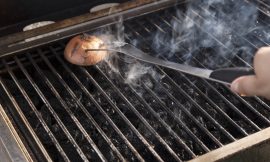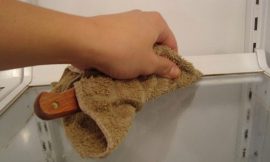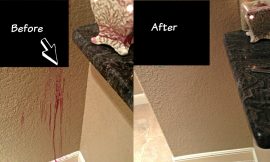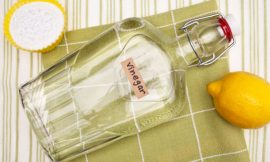
Did you know that approximately 70% of homes in the United States have reported mold growth at some point? Mold in the kitchen isn’t just an eyesore; it can pose serious health risks and degrade air quality. Whether it’s lurking behind your appliances or festering under your sink, understanding the top causes of mold in this crucial space is vital. In this article, I’ll take you on a journey to discover the culprits of kitchen mold and provide practical, actionable solutions to eliminate them. Let’s dig in and ensure your kitchen remains a clean and healthy environment!
Poor Ventilation
Role of Air Circulation
Have you ever noticed a musty smell in your kitchen? Poor ventilation could be the culprit. Inadequate airflow allows moisture to accumulate, creating a perfect environment for mold to thrive. Proper air circulation is vital to prevent dampness and promote a healthier space.
Signs of Poor Ventilation
How can you tell if your kitchen is suffering from poor ventilation? Look out for symptoms like damp odors, condensation on windows, or excessive humidity in the air. These signs indicate that moisture is not able to escape, which can lead to further issues if left unaddressed.
Solutions
So, what can you do to improve kitchen ventilation? Options include installing exhaust fans, opening windows while cooking, or using a range hood. These solutions help to enhance airflow and reduce moisture buildup in your kitchen.
Excessive Humidity
Understanding Humidity Levels
What does excessive humidity look like in your kitchen? Generally, humidity levels above 60% can create the ideal conditions for mold growth. It’s essential to monitor your indoor humidity to maintain a healthy environment.
Sources of Humidity
Where does this humidity come from? Common sources include activities like cooking, dishwashing, or simply the moisture-laden air that enters your home from outside. Being aware of these sources can help address potential issues before they escalate.
Prevention Tips
To keep those humidity levels in check, consider using dehumidifiers and moisture absorbers. These tools can effectively reduce excess moisture, creating a less hospitable environment for mold.
Leaky Faucets and Pipes
Identifying Leaks
Are you noticing water stains on your ceiling or under your sink? These could be signs of leaks that often go unnoticed. Detecting these issues early is crucial since they can lead to mold growth if left untreated.
Long-term Effects
What happens if you ignore those leaks? Untreated leaks can cause significant damage to your home, including structural issues and mold infestations that can be costly and inconvenient to remediate.
Repair Solutions
If you find a leak, there are some quick fixes you can try, like tightening a faucet or sealing a small pipe. However, don’t hesitate to call a plumber for assistance if you’re dealing with larger issues or need more extensive repairs.
Improper Food Storage
Moldy Food Sources
Did you know that moldy food could be the start of a bigger problem? Spoiled food can kickstart mold growth in your kitchen, creating health concerns and unpleasant odors.
Best Practices
What are the best practices for food storage to minimize mold risk? Ensure your food is stored in airtight containers and pay attention to expiration dates. This will help you keep food fresh and mold-free.
Cleaning Tips
Don’t forget to regularly inspect and clean your pantry and fridge. A thorough cleaning routine can help identify potential mold sources before they become a problem.
Building Materials and Construction Issues
Materials at Risk
Are you aware that some building materials are more prone to mold infestations? Items like drywall, wood, and carpet are particularly vulnerable if exposed to moisture over time.
Construction Flaws
Common construction errors, such as improper sealing or ventilation, can exacerbate moisture retention. Being mindful of these issues during any renovations or constructions can save you headaches down the road.
Renovation Considerations
If you’re planning a renovation, consider selecting mold-resistant materials. This proactive approach will help safeguard your home against potential mold issues and ensure a healthier living environment.
Ineffective Cleaning Routines
Understanding Mold Growth
How does neglecting your cleaning habits lead to mold growth? When cleaning routines are insufficient, mold spores can thrive, spreading quickly in dirty areas.
Essential Cleaning Practices
Identify key areas in your kitchen that need regular attention, like countertops, sinks, and appliance surfaces. Keeping these spots clean is a vital step in preventing mold growth.
Recommended Cleaning Products
Lastly, consider using non-toxic cleaning solutions that effectively fight mold. Look for products labeled as mold removers and make them a staple in your kitchen cleaning routine.
Conclusion
Mold in the kitchen can be a daunting issue, but with the proper knowledge of its causes and remedies, you can keep your space healthy and safe. Remember to ensure good ventilation, monitor humidity, fix leaks promptly, store food properly, use mold-resistant materials, and maintain a consistent cleaning routine. If you suspect that mold is already present in your kitchen, take action now! Your health and home deserve it. Don’t hesitate—start implementing these solutions today and enjoy a mold-free kitchen!








